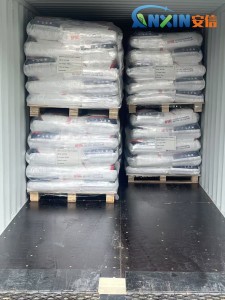Hydroxypropyl Methylcellulose (HPMC) is a non-ionic cellulose ether obtained from natural cellulose through chemical modification. Its unique physicochemical properties make it widely applicable in various fields such as construction, food, medicine, coatings, and daily chemicals.
1. Main Performance Research of HPMC
1.1. Solubility and Solution Characteristics
HPMC can rapidly dissolve in cold water to form a transparent or translucent viscous solution, while exhibiting reversible gel properties in hot water. This “thermal gelation” gives it unique advantages in building mortars, pharmaceutical coatings, and food thickeners. Its solution viscosity is significantly affected by the degree of substitution (methoxy and hydroxypropyl content), molecular weight, and temperature.
1.2. Water Retention and Film Formation
HPMC has excellent water retention properties, effectively reducing the rate of water evaporation. In mortar, putty powder, and other systems, it plays an important role in extending workability and improving workability. Meanwhile, its excellent film-forming properties allow it to form a uniform and dense film on the surface, providing waterproofing, dustproofing, and improved adhesion.
1.3. Rheological Properties and Thickening Effect
As a typical water-soluble polymer, HPMC solution exhibits pseudoplastic fluid characteristics. With increasing shear rate, the system viscosity decreases, facilitating stirring, application, and pumping. Different viscosity grades of HPMC can be used to specifically adjust the rheological properties of the product; for example, high-viscosity grades are suitable for tile adhesives and exterior wall putties, while low-viscosity grades are commonly used in coatings and pharmaceutical suspensions.
1.4. Thermal Stability and pH Adaptability
HPMC is stable within a pH range of 2–12, and is not easily degraded or inactivated; simultaneously, it exhibits good thermal stability, withstanding processing temperatures above 120°C. This allows HPMC to maintain stable performance in hot processing, dry-mix powders, and high-temperature application environments.
2. Key Factors Affecting HPMC Performance
2.1. Substitution Degree and Molecular Structure
The degree of substitution of methoxy (–OCH₃) and hydroxypropyl (–CH₂CHOHCH₃) groups in HPMC directly determines its solubility, viscosity, and thermogelation temperature. Generally, a higher methoxy content enhances film-forming properties and viscosity, while a higher hydroxypropyl content improves solubility and elasticity.
2.2. Particle Size and Dispersibility
Fineer powder particles disperse faster in water, but poor dispersibility can lead to agglomeration. Modern production processes improve dispersibility through surface treatment, enabling HPMC to dissolve quickly and uniformly in cold water.
2.3. Environment and System Proportioning
In building materials, the water-cement ratio, temperature, and additive ratio of mortar all affect the performance of HPMC. For example, in high-temperature construction, a model with a higher gelation temperature needs to be selected to prevent premature water loss.
3. Major Industrial Applications of HPMC
3.1. Building Materials
HPMC is a key additive in dry-mix mortar, tile adhesive, putty powder, self-leveling mortar, and thermal insulation mortar. Its water-retaining, thickening, adhesion-improving, and segregation-preventing properties significantly enhance workability and finished product quality. In tile adhesive, HPMC prevents slippage and strengthens tile adhesion; in putty powder, it improves application smoothness and crack resistance.
3.2. Pharmaceutical and Food Industries
Pharmaceutical-grade HPMC is widely used in tablet coating, controlled-release films, and capsule shells. Its high safety, non-toxicity, and non-irritating properties make it an important alternative to gelatin. In the food industry, HPMC is used as an emulsifying stabilizer, thickener, and humectant in ice cream, baked goods, and low-fat foods to improve taste and stability.
3.3. Coatings and Daily Chemical Products
In water-based coatings, HPMC improves the suspension of pigments and fillers, prevents sagging, and enhances coating smoothness. In the daily chemical industry, such as detergents, toothpaste, and shampoos, HPMC provides ideal consistency and texture while improving product storage stability.
3.4. Other Fields
HPMC is also used in various fields such as oil drilling fluids, ceramic molding, latex systems, and pesticide formulations as a thickener, dispersant, or stabilizer, demonstrating excellent multifunctionality.
4. Development Trends and Application Prospects
With the increasing demand for environmentally friendly and functional materials, HPMC is developing towards higher purity, finer formulation, and multifunctionality. Future research will focus on:
Improving molecular design to optimize dissolution rate and high-temperature resistance;
Developing composite cellulose ethers to achieve synergistic effects;
Promoting green production processes to reduce energy consumption and emissions.
With its excellent physicochemical properties and wide applicability, HPMC has become an important bridge connecting traditional industries and new material technologies. Its innovative applications in building energy conservation, controlled release in pharmaceuticals, and food safety indicate that HPMC will play an even more central role in future industrial development.
Post time: Oct-30-2025








